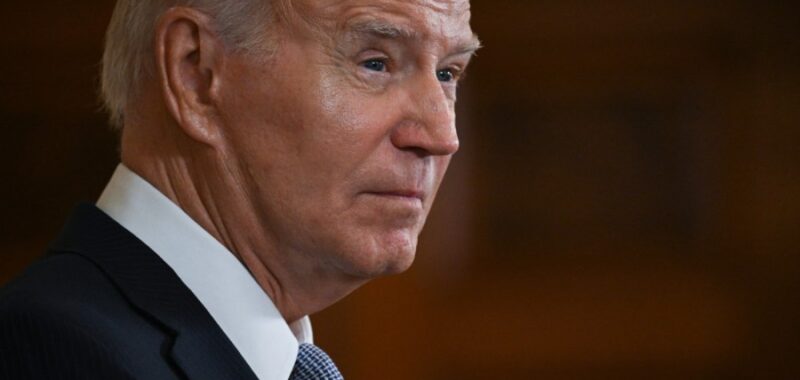
The presidential candidates have focused on a few hot-button issues during the 2024 campaign, but one critical button has apparently been too hot to handle. There has been no substantive discussion of global climate change, the biggest long-term threat to the U.S..
Donald Trump pretends it isn’t real. Kamala Harris knows better, but she may worry about alienating the millions of voters who work in the fossil-fuel sector, despite the Biden administration’s plans to help them through the clean-energy transition.
Perhaps Harris decided the urgency of climate action is already regularly illustrated in the evening news. Barely a week goes by without the extraordinary loss of life and property from weather-related disasters in the U.S. today.
However, there is a good news, and it deserves much more attention. The solution to climate change is to switch from fossil fuels to clean energy; thanks to the Biden administration and the Inflation Reduction Act, clean energy is putting down deep roots in the economy.
The best messenger is Secretary of Energy Jennifer Granholm. The Hatch Act prohibits her from using her position to stump for a political party or its candidates, but she doesn’t need to politicize the story. Clean energy is neither red nor blue. It is creating jobs, manufacturing plants, pollution-free cars, cleaner air, healthier families, and a chance to avoid the worst consequences of global warming.
Granholm delivered the latest news last week on Comedy Central’s “The Daily Show,” exchanging quips with host Michael Kosta while dishing out some impressive numbers:
- The Department of Energy has 17 national laboratories and 40,000 scientists working on America’s energy future. Granholm calls it “the solutions department.”
- This year, clean-energy technologies will generate pollution-free electricity equivalent to 30 Hoover Dams.
- Since President Biden took office, 4 million electric vehicles have been added to the nation’s fleet. They now make up 10 percent of the vehicle market. Nearly 200,000 publicly available vehicle charging stations have been deployed, with 1,000 more added weekly.
- The United States let China corner the electric vehicle and energy-storage batteries market, but America is taking it back. Some 450 battery assembly plans are opening in the U.S.
- Air conditioners save lives during heat waves but contribute to climate change when fossil fuels generate their electricity. Now, heat pumps are outselling conventional cooling and heating systems in America. They can reduce energy use by 50 percent or more.
- Advanced nuclear power can help meet the needs of energy-hungry data farms for artificial intelligence and crypto mining. The lack of permanent storage for radioactive wastes has been a longstanding barrier to nuclear energy, but the Energy Department is working to solve the problem with “consent-based siting” of storage.
- There are now 900 manufacturing plants in America’s clean energy industries. Sixty percent are located in Republican-led states and congressional districts. The Department of Energy is funding some of them in coal communities.
In August, the Energy Department reported the clean-energy sector created 142,000 new jobs last year, more than half of all new energy jobs. The growth rate was twice that of the overall economy. All 50 states and the District of Columbia benefited. Although Democrats have been concerned about their support among young people and Hispanics, a third of clean-energy jobs are held by people below age 30, and Latinos and Hispanics hold another third.
The Inflation Reduction Act’s incentives for solar and wind power, battery storage, electric vehicles, energy efficiency and other investments are spurring this growth. The law contains $369 billion of clean-energy funding over 10 years. However, analysts expect investments to grow to $400 billion or higher.
America’s investments must accelerate in the years ahead. One study says annual renewable energy installations must double to reach 100 percent carbon-free electricity by 2035, the goal necessary to achieve America’s carbon-reduction targets.
That is unlikely if Trump wins the election and Republicans in Congress continue to march in lockstep with him. Trump calls the Inflation Reduction Act a “con” and “The Green New Scam,” and says he would try to repeal the law or claw back unspent funds. Although the idea of improving the lives of 131 million Americans living with unhealthy fossil-energy air pollution has not persuaded the GOP of the need for clean energy, the promise of jobs is beginning to show the limits of Republican sycophancy to Trump.
In 2022, no Republican voted for the Inflation Reduction Act, but in August, 18 House Republicans wrote to Speaker Mike Johnson urging him not to support a repeal of its tax incentives. As Politico notes, the law is “undeniably bringing federal money, private investments, and jobs into communities around the country overwhelmingly represented by Republicans — and the once united opposition is fraying.”
An analysis by Rystad Energy, an Oslo-based think tank, concludes that Republican states will ignore Trump and drive cleantech growth in the U.S. through 2030. “The red states are basically receiving the lion’s share of investments,” a spokesman said.
The importance of stable investments in carbon-free energy goes beyond the U.S. “To what degree the U.S. keeps moving full steam ahead on the energy transition is likely to affect the pace in other countries,” another analyst said.
The world would benefit even more if the Energy Department’s 40,000 scientists could figure out how to plug Granholm into the energy grid. She is joyful, optimistic, forward-looking, super smart and bullish about the future in a carbon-free global economy. With nearly 200 nations getting ready to meet for their 29th Conference of the Parties on climate change, the world could use more of that enthusiasm right now.
William S. Becker is executive director of the Presidential Climate Action Project and a former senior official at the U.S. Department of Energy.

